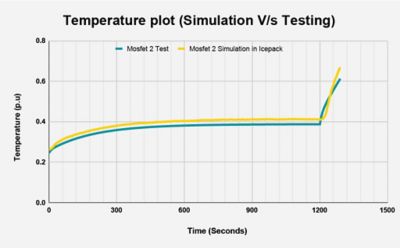Case Study
-
United States -
United Kingdom -
India -
France -
Deutschland -
Italia -
日本 -
대한민국 -
中国 -
台灣
-
-
產品系列
查看所有產品Ansys致力於為當今的學生打下成功的基礎,通過向學生提供免費的模擬工程軟體。
-
India is concentrating on ramping up two- and three-wheeler electric vehicle (EV) platforms. With lower additional costs from internal combustion engine (ICE) equivalents and very low running costs, customers can now choose a sustainable alternative to ICE vehicles. However, their drivetrain components were not originally made to comply with Indian environmental requirements, including thermal, vibration, and ingress protection requirements. Nhanz, with ample original equipment manufacturer (OEM) experience, front-loaded these requirements into their design and iterated different thermal combinations to create a practical drivetrain.
Challenges
The major challenge with these systems is their very low cost of system manufacturing, which eliminates the facilitation of liquid cooling. A shortage of qualified automobile fans rules out the alternative of forced air cooling. Hence, suppliers are inclined to meet requirements with practical, natural airflow within the vehicle. This is aggravated by high grade roads and heavy vehicle loads, which increases the average dissipation loss in the system.
Engineering Solution
Nhanz worked out multiple inline thermal management systems to meet technical and cost requirements using the parameters from the challenges they faced. To consider a practical scenario, all peak ratings were checked after continuous ratings were stabilized. Simulations were performed to check multiple peak operations that a system could handle in sequence. With considerable effort spent in virtual validation in different scenarios, they developed a platform which worked, as per simulation, “first-time right.”
Benefits
- Cost reduction from reduced weight in materials
- About three months saved by getting it right the first time
- 15% improved thermal performance for the same volume

Thermal test of mosfet 2 comparison with Ansys Icepak simulation

Thermal test of mosfet 1 comparison with Ansys Icepak simulation

Thermal test of mosfet 3 comparison with Ansys Icepak simulation
查看 Ansys 的服務與產品
查看 Ansys 的服務與產品
立即聯絡我們
感謝您聯絡我們!
我們將在此解答您的問題,並期待與您交流互動。Ansys 的銷售團隊成員會立即與您聯絡。











